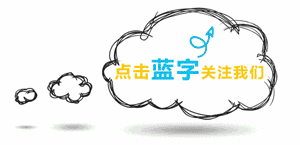
“Living in Changbai, my surname is Shen, the king of herbs, the root that saves lives.” Ginseng is one of the “three treasures of Northeast China,” a miraculous plant bestowed by nature to humanity, known as the king of all herbs, the king of all medicines, and the king of all tonics, famous for its unique habitat, mysterious legends, and marvelous effects.

The first ancient poem about ginseng states: “Three branches and five leaves, facing the shade, seeking me, searching among the linden trees.” Although this ginseng poem contains only 16 characters, it vividly describes the characteristics of ginseng: three branches, five leaves, prefers shade and fears direct sunlight, suitable for growth in mixed coniferous and broadleaf forests, with broadleaf forests where linden trees grow being the best.
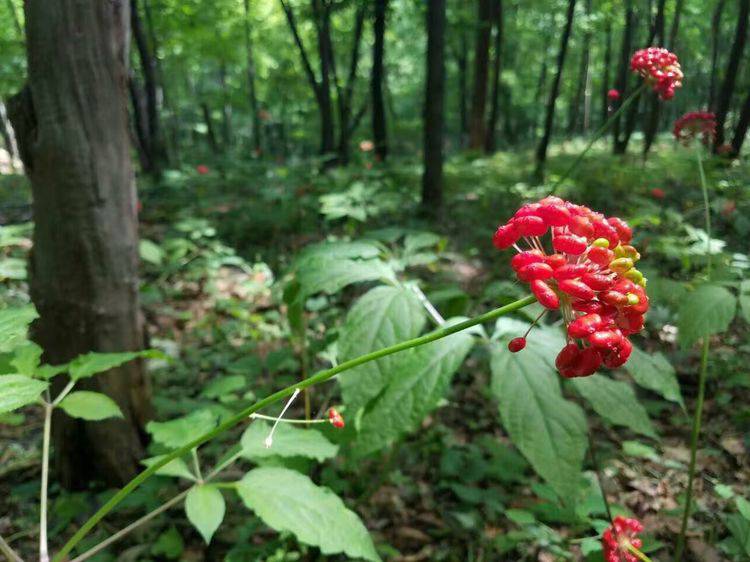
Ginseng is a perennial herb of the Araliaceae family, with palmate compound leaves arranged in whorls of 1 to 6 at the top of the stem, flowers pale yellow-green to white, and berry-like seeds that turn bright red when mature. It is distributed between latitudes 33° to 48° north, mainly in the Changbai Mountain range of China and near the Changbai Mountain range in North Korea.
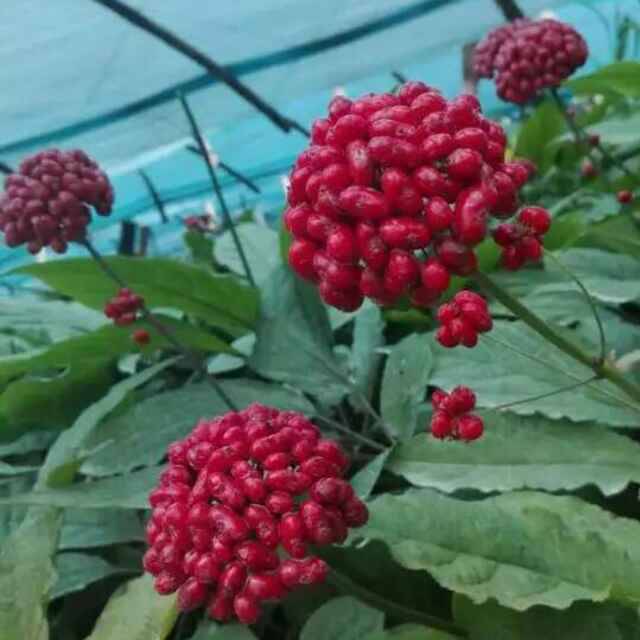
The number of whorled leaves of ginseng varies with its age, and the age of ginseng can be determined by the morphology and number of leaves.
One year old: 1 three-part compound leaf — three flowers;
Two years old: 1 five-part compound leaf — five leaves or palm;
Three years old: 2 (opposite) five-part compound leaves — two jiazi;
Four years old: 3 (whorled) five-part compound leaves — lantern;
Five years old: 4 (whorled) five-part compound leaves — four leaves;
Six years old: 5 (whorled) five-part compound leaves — five leaves.
Mature plants often have 3 to 6 leaves, with long petioles, and leaflets that are palmately five-parted, occasionally three-parted.

Fusong Wanliang Town is known as the hometown of ginseng in China, with a long history and rich cultural heritage. According to the Fusong County Chronicle, the harvesting of wild ginseng has a history of over 1300 years, and the cultivation of garden ginseng began in 1567 (during the Ming Dynasty), which is over 440 years ago. The trading history of ginseng in Wanliang Town can be traced back to the 1970s, with an annual trading volume accounting for 70% of the world’s ginseng trade and over 85% of the national ginseng trade.
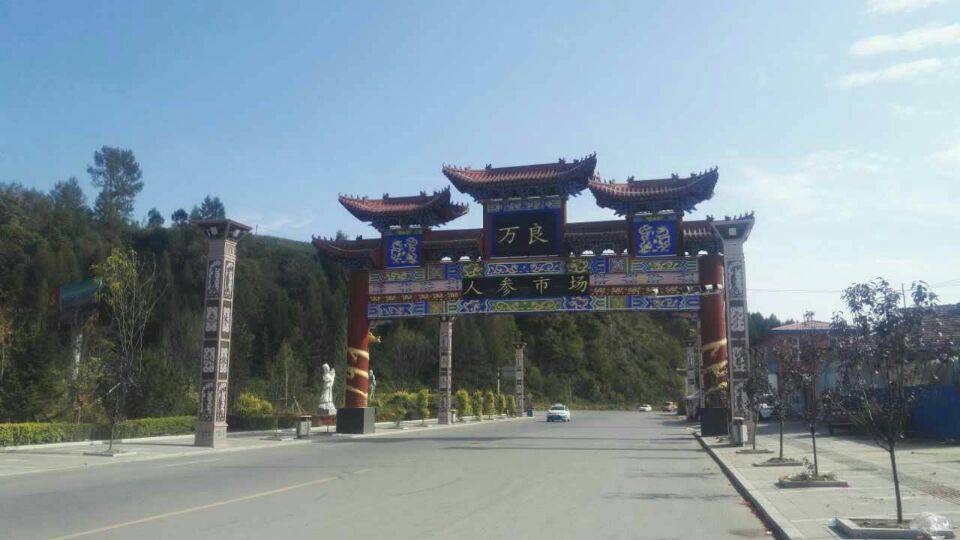
Located in Wanliang Town, the Changbai Mountain Ginseng Market is said to have spontaneously formed in a cornfield, existing only for about a month each year, which is why locals refer to it as the ghost market, as transactions occur at night, starting at dusk.

In September, the nights in Wanliang are already chilly, but the ginseng trading market is bustling with activity, crowded with people, and piles of ginseng are stacked high in the trading hall.


Ginseng cultivators refer to cultivated ginseng as “garden ginseng,” which is often categorized into “ordinary garden ginseng,” “edge strip ginseng,” and “stone pillar ginseng” based on the place of origin. Wild ginseng is referred to as “mountain ginseng,” and due to differences in environment and growth conditions, there are currently various products such as pure “mountain ginseng,” transformed mountain ginseng, pond bottom ginseng, flat ginseng, moved mountain ginseng, and forest undergrowth ginseng.


Ordinary garden ginseng
Produced in Fusong County, Jilin Province. It is transplanted once, grown for 2 or 3 years, then transplanted again for 4 or 3 years, and harvested at 6 years. It is mainly cultivated in humus-rich, loose, and fertile soil. The main characteristics are short rhizomes, short lateral roots, and many fibrous roots.

Ordinary round ginseng

Edge strip ginseng
Mainly produced in Jilin Province, Jilin City. During production, it undergoes two transplants, known as the “two-turn system.” It is grown for 2 or 3 years, and when transplanted, long-shaped ginseng seedlings are selected, shaped after the lower roots, and transplanted again after 2 to 3 years, harvested at 6 to 8 years. It is mainly cultivated in mountainous areas with low organic matter content, poor fertility, and sandy soil. The main characteristics are long rhizomes, long main bodies, and few fibrous roots.

Edge strip ginseng

Stone pillar ginseng
Also known as “pillar ginseng,” originally produced in Shizhuzi Village, Zhenjiang Township, Kuandian Manchu Autonomous County, Liaoning Province, hence the name. It is cultivated through direct seeding or transplanting seedlings, harvested after about 15 years, and is mainly grown in sandy soil. The main characteristics are long rhizomes, small main bodies, and generally two lateral roots with few fibrous roots.

Stone pillar ginseng

Wild mountain ginseng
Seeds are spread by birds and animals, growing in forests composed of trees, shrubs, and weeds. The main root is short and thick, equal to or shorter than the rhizome (bulb), shaped like a human character, diamond, or cylindrical, often with two lateral roots (ginseng legs); the surface is gray-yellow, with fine and deeply sunken ring patterns (iron wire patterns) at the top; the rhizome is slender, with adventitious roots (fibrous), twisted at the top, with dense stem scars (bulb scars), and smoother at the bottom; fibrous roots are sparse, about 1 to 2 times the length of the main root, flexible and not easily broken, with obvious warty protrusions (pearl bumps). Wild mountain ginseng is generally considered top quality if it has perfect forms of bulb, fibrous, body, pattern, and root.

Wild mountain ginseng
Wild mountain ginseng grows upright in deep forests, horizontally in harsh natural conditions, with its tenacious vitality stretching year after year, growing little by little. The experiences of ginseng in the struggle between heaven and earth are fully displayed in its five forms (bulb, fibrous, body, pattern, root), with the finely sunken “pattern” depicting its hardships; the unremarkable “fibrous” showcasing its thirst for life; and the diverse “body” being the result of absorbing the essence of heaven and earth.

Wild mountain ginseng

Transformed mountain ginseng
During the growth of mountain ginseng, if the main root is damaged or decays for some reason, and the adventitious roots continue to grow, it becomes a rootless ginseng, referred to as “transformed mountain ginseng.”

Transformed mountain ginseng

Forest undergrowth ginseng (forest ginseng)
Using the seeds of mountain ginseng, artificially sown in a natural forest environment, it is referred to as “forest undergrowth ginseng,” commonly known as “seed sea.”

Forest ginseng

Pond bottom ginseng
In the ginseng planting area, after harvesting ginseng, the remaining ginseng seeds or garden ginseng seedlings that grow naturally for many years are referred to as “pond bottom ginseng.”

Pond bottom ginseng

Flat ginseng
Seeds are sown in the ginseng field, and during artificial management, only weeding and fertilizing are done without replanting, allowing it to grow naturally for about 20 years before harvesting and processing, referred to as “flat ginseng.”

Flat ginseng

Moved mountain ginseng
When harvesting mountain ginseng, smaller ones found are moved to a suitable place for planting, and when they grow, they are harvested, or smaller garden ginseng is moved to the forest to grow naturally, referred to as “moved mountain ginseng.”

Moved mountain ginseng
 In conclusion, the identification of ginseng is a profound science. As the saying goes, “the sea of ginseng is boundless; what is learned from books is always shallow; one must humbly learn through practice, listen, observe, and gain knowledge.”
In conclusion, the identification of ginseng is a profound science. As the saying goes, “the sea of ginseng is boundless; what is learned from books is always shallow; one must humbly learn through practice, listen, observe, and gain knowledge.”
【Special thanks to Teacher Liu Yingwei for assistance in identification and providing some images】

Text by: Yan Wei
Some images: Internet
Reviewed by: Jiang Xiaoyan
Edited by: CC

You might be interested in:
Gao Fang has an appointment • Meeting chapter
Gao Fang has an appointment • Encounter chapter
Gao Fang has an appointment • Love chapter
【Saturday ● Chinese Herbal Medicine】 Golden Buckwheat — Taking Away Lung Abscess
Eating Away Autumn “Dryness”
【Saturday ● Chinese Herbal Medicine】 Encountering Materia Medica — Plantago
【Saturday ● TCM Culture】 “Medicine and Food Homologous” Science Knowledge (II)
【Saturday ● TCM Culture】 “Medicine and Food Homologous” Science Knowledge (I)

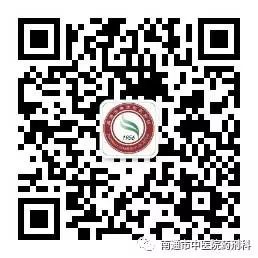
For more exciting content, please follow the Pharmacy Department of Nantong Traditional Chinese Medicine Hospital

Long press, recognize, and follow the official WeChat of Nantong Traditional Chinese Medicine Hospital

